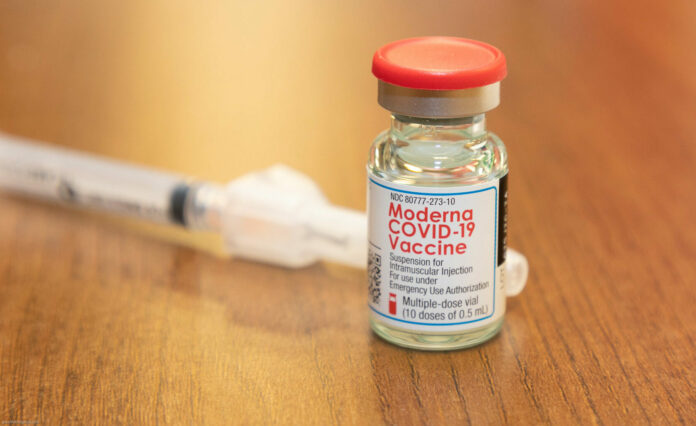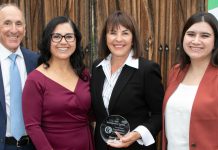MONTEREY COUNTY — Monterey County’s Covid-19 vaccination plan is not going quickly at all, and if things remain as they are with low weekly shipments, it could take until September 2023 to vaccinate 80% of adults in the county.
Such trickle availability has caused the county to focus on older residents, age 75 and up.
Dr. Edward Moreno, the county’s health officer, presented the information during the Jan. 26 meeting of the Monterey County Board of Supervisors.
Moreno said the threshold for herd immunity is 80%, which means 514,000 doses for Monterey County adults using a two-dose regimen. The problem, however, is that the county’s current supply from the state is only 2,000 to 4,000 doses per week.
“It would take us 32 months to get to herd immunity among adults,” Moreno said. “That’s starting in January 2021 through September 2023. In order to speed this up, we really need more than 2,000 to 4,000 doses per week coming into Monterey County.”
These numbers, he said, ignore the fact 80% of children would also need to be immunized with a vaccine approved for children.
“Even if we do a good job vaccinating adults, kids can still get infected, still get sick and spread it to adults who haven’t achieved immunity yet,” Moreno said.
The numeric breakdown and foretelling of taking years to achieve adequate vaccination numbers sparked county supervisors on Jan. 28 to draft a letter to Gov. Gavin Newsom to request an increase in vaccines for the county.
“Monterey County currently grows over 150 specialty crops and exports nearly 400 billion pounds of produce from the Salinas Valley every year,” said the letter, signed by Wendy Root Askew, the chair of the board or supervisors. “Keeping the agricultural industry and its workers safe and productive is vital to ensure the food supply of the county, state, nation and world.”
The letter spelled out the danger of inequality in the vaccine distribution, as the agricultural workers in Monterey County remain among the most at-risk for catching the virus in the state, yet so much demand is put on them to produce the nation’s food.
“Farmworkers are the fulcrum of the food chain,” Askew said in the letter. “Over the past months it has become clear that our County’s infection rates are the highest among the agricultural workforce and their family members. Ensuring the health of agricultural workers is of paramount importance to ensure the health of all county residents.”
The letter went on to call out inequity compared to neighboring counties, including Santa Clara, Santa Cruz and San Luis Obispo counties.
During the board meeting, Moreno broke down the supply chain, stating the Centers for Disease Control at the federal level determines how many vaccine doses to send to states, then the states receive those and determine how to distribute doses to their counties.
Moreno showed breakdowns of Monterey County’s current vaccine priority groups, as it administers vaccines to individuals listed in Phase 1A and Phase 1B.
In Phase 1A, there are 3,791 long-term care residents, 4,366 in-home supportive services and other community health workers and 24,000 health care personnel.
“We have to make sufficient progress to move from 1A to 1B as we don’t have to completely vaccinate all of 1A,” Moreno said. “Some people are a little hesitant to get vaccinated. … We estimate about 54% of the health care workforce in Monterey County has received at least one dose.”
According to census data, Moreno had breakdowns for the populations within Phase 1B.
There are 38,660 residents age 75 or older, which would take 19 weeks to administer a single dose, or double that time to administer the needed two doses. There are 47,811 residents who are between 65 and 74 years old, which would take 24 weeks for them all to get one dose.
There are 10,810 who work in education and childcare, which would take six weeks for one dose. The county has 93,429 workers in food and agriculture, which would almost eclipse a year for one dose, at 47 weeks.
The smallest group was emergency services, at 6,467, which would take four weeks.
“That’s a total of 100 weeks, or almost two years, to vaccinate all those groups once, and we don’t have enough vaccine,” Moreno said.
Moreno noted the big question for the county is who to immunize in Phase 1B with such a limited supply of vaccines. The metric the county used to make that decision was who had the highest risk of death from Covid-19 if left without immunization.
“We’ve focused on the group with the highest risk of dying, which is 75 and older,” Moreno said. “At this point, if you’re 75 and older in Monterey County, you can start looking at options to get vaccinated.” He added, “We don’t have enough vaccine to get to everyone in Phase 1B, Tier 1, so it’s 75 and older for now.”
On Feb. 1, local Assemblymember Robert Rivas joined the call for increased vaccines for farmworkers, issuing a request to Newsom in a letter.
“Farmworkers are contracting and dying of Covid-19 at disproportionate and alarming rates in California,” Rivas said. “It is unacceptable that so many farmworkers are struggling to access and receive the Covid-19 vaccine, despite being rightfully prioritized in Tier 1 of Phase 1B of the state’s vaccination plan.”
He called out gaps that the state administrations must fill in the allocation and distribution of vaccines to farmworkers.
“It is the state’s responsibly to provide adequate doses to meet the demand of our farmworker communities,” Rivas said. “As such, the administration must begin allocating vaccine doses by using local jurisdictions as small as cities, neighborhoods, or even census tracts to identify the highest-need, predominately farmworker areas.”














